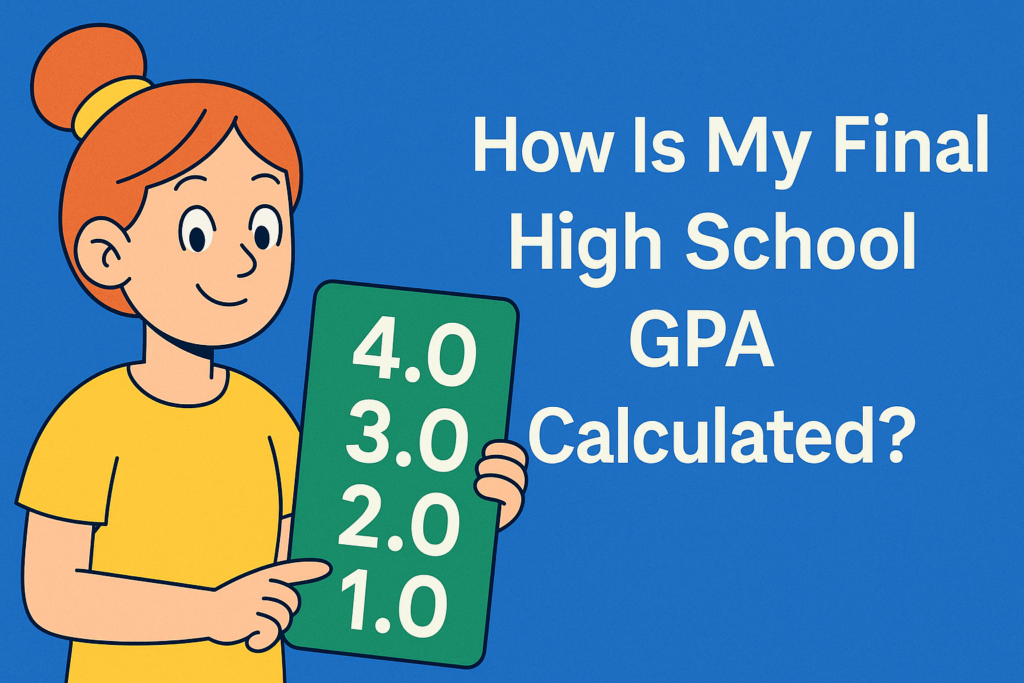Online GPA Calculator for 6 Point Scale Grading
Have you ever looked at your school’s grading and thought, “Wait, why is this out of 6?” Yeah — it throws a lot of students off. Most folks are used to the 4.0 system (or maybe 5.0 if they’ve taken AP or Honors). But the 6-point scale? That one’s a bit different.
You’ll see it pop up in some Canadian schools and other international programs. And figuring out where your grades stand on that scale can feel like decoding a secret message.
That’s why this 6 Scale Point GPA calculator exists. It’s not complicated. It just makes your life easier.
Instead of pulling out a calculator and trying to guess how each letter grade translates, you plug it in. Boom — your GPA is done. No spreadsheet, no stress. Just straight-up answers.
Still, how does the 6-point system even work? Don’t worry. We’ll break it down — one small step at a time.
6.0 Scale GPA Calculator
Your GPA
✅ What Is 6-Point Scale Grading?
What Is a 6.0 Scale GPA?
If you’ve never seen a 6.0 scale GPA calculator before, don’t worry — you’re not the only one. Most students are familiar with the 4.0 or maybe the 5.0 scale. However, some schools — especially in Canada or international programs — use a 6-point GPA scale instead. And yep, it’s a little different.
Here’s the short version:
6 = A+ (excellent work)
5 = A or A–
4 = B+
3 = C
2 = D
1 = F
Pretty straightforward, right?
Some schools even use decimal points like 5.3 or 4.7 — so if you’re trying to average those manually? Ugh. That’s where a Grade Calculator or Final Grade Calculator comes in handy. You can also save yourself the trouble by using a GPA Calculator designed for the 6-point system.
6-Point GPA Scale Reference Table
| Grade Point | Letter Grade | What It Means |
|---|---|---|
| 6 | A+ | Top of the class |
| 5 | A | Very good |
| 4 | B+ | Strong, above average |
| 3 | C | Okay, but room to grow |
| 2 | D | Barely passing |
| 1 | F | Not passing |
Now, if you’re switching from a different grading system — like CGPA to GPA or Percentage to GPA — doing it by hand can be a pain. That’s why the GPA Conversion Calculator exists. It just does the math for you.
And if you’re planning ahead — maybe aiming for scholarships or prepping for college — tools like the College GPA Calculator, Cumulative GPA Calculator, or even a Scholarship Calculator can help you stay on track.
It’s not just about plugging in numbers. It’s about seeing where you stand — and knowing what to aim for next.
🎓 Who Can Use 6-Point GPA Calculator?
If your school uses numbers instead of letters — or you’ve ever had to match your grades with another country’s system — this kind of tool can really come in handy.
You might be a student enrolled in an international curriculum, attending school in a region like Quebec, or even studying abroad. In any of those cases, your transcript probably doesn’t follow the typical format most U.S. schools use.
That’s where this tool comes in. It’s useful for:
- Students comparing results across borders
- Applicants trying to meet foreign admission requirements
- Anyone dealing with academic credit transfers
- People converting grades for reports or applications
You don’t need to memorize formulas or worry about rounding errors. Just type in your scores, and you’ll get a clear idea of how you’re doing — no second-guessing, no spreadsheets.
Even if you’re double-checking things before applying, it gives you peace of mind. And that’s worth something.
🧮 How to Use This 6-Scale GPA Calculator (Step-by-Step Guide)
If math isn’t your thing — that’s okay. Seriously, you don’t need to love numbers to figure this out. You just need a basic idea of your grades, credits, and how the two go together.
We’ll take it one step at a time.
✅ Step 1: List your courses
Write down all the classes you want to include in your GPA. Doesn’t have to be every subject ever — just the ones that count for this semester or term.
- Math
- English
- Chemistry
- History
✅ Step 2: Figure out what grade you got in each
Use your report card or transcript. If your school uses letters like A, B+, C, etc., you’ll convert them using the 6-point scale.
| Letter Grade | 6.0 Scale Value |
|---|---|
| A+ | 6.0 |
| A | 5.5 |
| A− | 5.0 |
| B+ | 4.5 |
| B | 4.0 |
| B− | 3.5 |
| C+ | 3.0 |
| C | 2.5 |
| C− | 2.0 |
| D+ | 1.5 |
| D | 1.0 |
| E | 0.5 |
| F | 0.0 |
Let’s say:
- Math = A → 5.5
- English = B+ → 4.5
- Chemistry = A− → 5.0
- History = C → 2.5
✅ Step 3: Write down how many credits each course is worth
Courses have different weights. A core subject like Chemistry might be worth more than, say, Art History. Just check your syllabus or ask your teacher if you’re unsure.
- Math = 3 credits
- English = 2 credits
- Chemistry = 4 credits
- History = 2 credits
✅ Step 4: Multiply the grade value by the course credits
This gives you what’s called “grade points.”
| Course | Grade | Value | Credits | Grade Points |
|---|---|---|---|---|
| Math | A | 5.5 | 3 | 16.5 |
| English | B+ | 4.5 | 2 | 9.0 |
| Chemistry | A− | 5.0 | 4 | 20.0 |
| History | C | 2.5 | 2 | 5.0 |
✅ Step 5: Add up all your grade points
Total Grade Points:
16.5 + 9.0 + 20.0 + 5.0 = 50.5
✅ Step 6: Add up all your credits
Total Credits:
3 + 2 + 4 + 2 = 11 credits
✅ Step 7: Divide total grade points by total credits
Now take your total grade points and divide by your total credits.
GPA = 50.5 ÷ 11 = 4.59
💡 Real Talk:
A GPA of 4.59 on the 6-point scale is solid — you’re sitting somewhere between a B+ and an A average.
If your school uses decimals like 5.3 or 4.7, no stress — same formula works. The calculator handles that too.
🎓 FAQs About 6-Point GPA Grading System
1. What is a 6.0 GPA scale, and how is it different from a 4.0?
2. How do I calculate GPA on the 6-point scale?
3. What’s considered a good GPA on the 6.0 scale?
4. Can I convert my CGPA to a 6-point GPA?
5. Do universities accept the 6-point GPA system?
6. What are the letter grade equivalents on the 6.0 scale?
7. Can I use decimal grades in the GPA calculator — like 5.2 or 4.8?
8. What if my courses have different credit hours?
9. Is a GPA of 4.59 on the 6.0 scale any good?
10. Can high school students use this GPA calculator too?
11. Will colleges accept the GPA I get from the 6 Scale GPA calculator?
12. Why should I calculate my GPA on the 6-point scale anyway?
GPA Calculator Suite
Access our comprehensive suite of GPA calculators
GPA Calculator
Calculate your GPA easily
College GPA Calculator
Calculate your college GPA easily
High School GPA Calculator
Calculate your high school GPA easily
Semester GPA Calculator
Calculate your Semester GPA easily
Cumulative GPA Calculator
Calculate your Cumulative GPA easily
Final Grade Calculator
Calculate your Final Grade easily
Weighted Grade Calculator
Calculate your Weighted Grade easily
EZ Grader – Easy Grade Calculator
Calculate your Easy Grade Calculator easily
CGPA to GPA Converter
Convert CGPA to GPA easily
CGPA to Percentage Converter
Convert CGPA to Percentage easily
CGPA to Marks Converter
Convert CGPA to Marks easily
Grade to GPA Converter
Convert Grade to GPA easily
Marks to Percentage Converter
Convert Marks to Percentage easily
Percentage To CGPA Converter
Convert Percentage To CGPA easily
Percentage to GPA Converter
Convert Percentage to GPA easily
Percentage To SGPA Converter
Convert Percentage To SGPA easily
SGPA to CGPA Converter
Convert SGPA to CGPA easily
SGPA to Percentage Converter
Convert SGPA to Percentage easily
GPA Calculator: The Ultimate Guides to Calculate & Improve Your Grades
How Is My Final High School GPA Calculated?
How Is My Final High School GPA Calculated? What Is a Final GPA in High School? Your final high school GPA is a cumulative number that reflects how you performed across all your classes from freshman through senior year. It’s more than just a semester average. It’s the total snapshot. Colleges use this number to […]
How to Calculate Your GPA on a 4.0 Scale?
How to Calculate Your GPA on a 4.0 Scale? What is GPA and Why Does It Matter? GPA stands for Grade Point Average. It sums up your academic performance into one number. If you’re aiming for college, scholarships, or even some jobs, this number quietly sits on the top of your transcript, silently speaking for […]
How do I calculate my overall High School GPA?
How do I calculate my overall High School GPA? Understanding the Basics of High School GPA What Is GPA and Why Does It Matter? Grade Point Average (GPA) is the most common way schools summarize your academic performance. It takes all your grades and converts them into a single number. That number is used by […]




